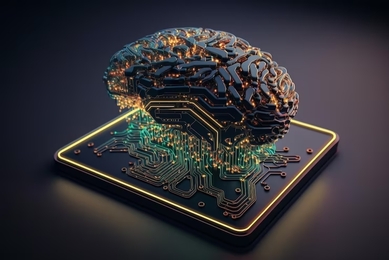Introduction
Generative AI, powered by advanced machine learning algorithms, is poised to revolutionize enterprises across various domains. While chatbots like Chat GPT have gained attention, the potential of generative AI extends far beyond conversational interfaces.
This article explores the future of generative AI for businesses, highlighting its current state, challenges, and risks. Moreover, it delves into how generative AI is reshaping business processes in different industries. Finally, it discusses insights from enterprise leaders on the transformative power of generative AI and emphasizes the need for responsible implementation.
Generative AI: Unleashing Creativity and Innovation
Generative AI, a branch of artificial intelligence, enables machines to produce original content akin to human creativity. Distinct from supervised learning techniques, generative AI trains neural networks to generate new data, such as images, music, and text, based on learned patterns.
This empowers enterprises to automate tasks, drive innovation, and create novel products and services. While generative AI has made significant inroads into various domains, including marketing, content creation, and product design, it holds tremendous potential beyond its current applications.
Current Applications of Generative AI in Enterprises
Enterprises are actively leveraging generative AI in diverse areas, with chatbots being a notable example. Chat GPT and similar models enable efficient customer service by generating human-like responses.
Additionally, generative AI facilitates product design, allowing companies like Adidas to tailor shoes to individual customers’ needs. Content creation is another domain benefiting from generative AI, as it can automate the generation of articles and social media posts, reducing costs while maintaining quality. These applications showcase the versatility and value of generative AI in transforming enterprise operations.
Challenges and Risks of Generative AI
While generative AI offers numerous opportunities, it also presents challenges and risks.
- Biases in training data can perpetuate existing biases, while malicious use can lead to fake content and potential social consequences.
- Intellectual property infringement and lack of control over outputs are additional concerns.
- Ethical considerations, such as content ownership and transparency, and the environmental impact of training models also warrant attention.
Responsible practices, including careful data curation, algorithmic transparency, and safeguards against malicious use, are crucial to mitigate these risks and ensure the responsible implementation of generative AI.
Reshaping Business Processes Across Industries
Generative AI is transforming various aspects of enterprise operations across industries:
- Creative Content Generation
Generative AI is being utilized to push the boundaries of creativity, generating artwork, music, video, and 3D models. Industries like video game development, advertising, and marketing benefit from the unique and engaging content generated by generative AI.
- Personalized Product Recommendations
Generative AI enables enterprises to deliver personalized product recommendations by analysing customer data. These tailored experiences enhance customer satisfaction, increase sales, and foster stronger relationships.
- Automated Design
Generative AI automates design processes, providing innovative ideas and solutions. Architecture and fashion industries, among others, employ generative AI to generate new building designs and clothing styles based on specific requirements and constraints.
- Predictive Maintenance
Generative AI plays a vital role in predictive maintenance, analyzing data to predict equipment failures and recommend maintenance before problems occur. This reduces downtime, increases efficiency, and optimizes performance.
- Natural Language Generation
Generative AI facilitates improved customer communication through natural language generation. Applications include chatbots, virtual assistants, and automated report writing, enhancing customer service and freeing up employees’ time.
- Autonomous Vehicles
Generative AI powers the development of autonomous vehicles, enabling real-time decision-making based on surroundings. Technology enhances safety and efficiency in transportation and logistics, revolutionizing industries and transforming the way people and goods are transported.
Navigating the Future: Insights from Enterprise Leaders on Generative AI
Industry leaders foresee a bright future for generative AI in enterprises due to its transformative potential. They highlight several key reasons for optimism. Firstly, generative AI allows for the automation of routine tasks, boosting productivity and cost savings. Secondly, it enables personalized experiences by leveraging customer data, leading to stronger customer relationships and increased sales. Thirdly, generative AI helps identify new opportunities and markets by analyzing vast amounts of data and uncovering patterns and trends.
However, leaders also acknowledge the risks and challenges associated with generative AI implementation. Concerns around data privacy, security, and ethical decision-making arise. To address these concerns, enterprises must invest in robust data privacy measures, ensure transparency and explainability in AI algorithms, and provide ethical training for employees.
Conclusion
Generative AI holds immense promise for enterprises, transcending the boundaries of chatbots. It empowers businesses to automate processes, create innovative content, and deliver personalized experiences. While challenges such as bias, malicious use, and ethical considerations exist, responsible implementation and proactive measures can mitigate these risks.
As technology continues to advance, generative AI will shape the future of enterprises, enabling them to operate more efficiently, drive innovation, and cater to evolving customer demands. Enterprises must embrace this transformative technology while being mindful of ethical and responsible practices.



